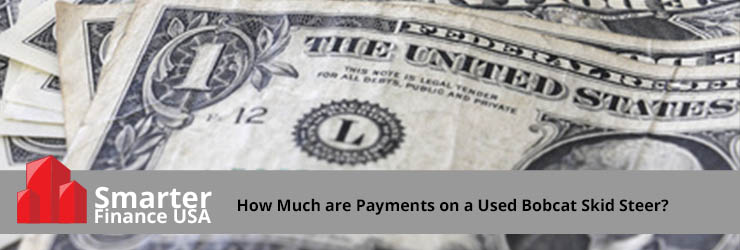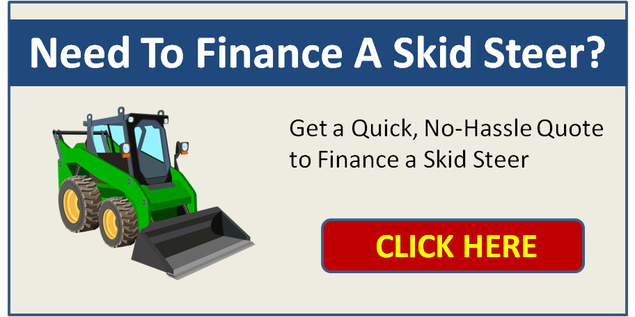

When we talk to people about Bobcat financing and leasing, one of the most important things buyers want to know is what their payments are likely to be.
This is important in business planning, not only so you can determine whether you can afford the payments, but more importantly to find the balance between price and affordability and determine what level of payment will give enough profit left over after paying for your equipment such that you can justify buying the equipment in the first place.
Your monthly payments will be determined by the price of the equipment, your credit, how long you've been in business, and how long you are financing the equipment for.
Let's first go over how much used Bobcats really cost, and then we'll look at how much payments will be to finance skid steers or other yellow iron.
How Much Does a Used Bobcat Cost?
Used Bobcats have a pretty large range, since equipment with low hours that is fairly new can easily go for $25,000 or more, and you can find some real garbage that has been auctioned off for $3,000 or less. Sometimes we run into folks that are trying to get financing for a 35-year old skid steer that costs $4,000 and that ends up not being possible - finance companies and anyone else with a brain know that you can't find quality equipment for $4,000 and that machine is probably pretty close to the junk yard.
In general, a lot of folks look at equipment that costs between $20,000 and $25,000 - saving about 50% from the price of a new machine but still affording quality equipment that can last a while. The truth is, many customers start out looking for about $15,000 in financing, but once they start really shopping and learn what level of quality the equipment that is available for $15,000 represents, they end up going for a machine in the low $20,000's. Sometimes you can get good used equipment in the $15,000 range with around 2,000 hours on it.
For the purposes of this article, let's talk about Bobcats that cost about $20,000.
What are Rates on a $20,000 Skid Steer?
Rates depend a lot on your credit and whether you are new in business. Let's say you want to do a lease where you own the equipment at the end for a 10% residual. (You can also choose to own it at the end for $1 if you want, if so, payments would be slightly higher).
If you've been in business for two or more years, here would be your approximate payments on a used Bobcat:

A couple of things to note here, generally the worse your credit, the shorter the payment term available, as it limits lender risk. Also in the bottom tiers of credit, under 590, payments can sometimes be a bit higher, depending on just how bad (i.e. risky to the lender) your situation is.
Find out what your rates would be to finance a skid steer
Rates will also be higher if your business is less than two years old. Default rates (the percentage of people that don't make all their payments) skyrocket for new businesses and level off after the 24th month in business. Most finance companies will not consider looking at equipment leasing for a new business, and those that do ratchet up the rates quite a bit.
With that being said, here are rates for new businesses to finance a Bobcat purchase:

With poor credit, when leasing equipment as a new business, typically you will need to make either a large security deposit, provide additional collateral, or both.
Bobcat Leasing Payments: $1 Buyout vs. Residual
The payments we just went over were assuming a 10% residual at the end, meaning if you bought a $20,000 Bobcat, if you chose to keep it at the end of the lease term you would make a final payment of $2,000. If you chose the $1 buyout option you'd own the equipment at the end (with a $1 final payment), and payments would be from 5% to 7% higher.
The impact of end-of-term options goes deeper than just the payment, however. In general, by choosing an option with a larger payment at the end, you will save on taxes. Imagine a new business with fair credit financing over 4 years. Let's assume the business owner is going to make some money and end up in the 25% tax bracket.
With a $1 buyout option, you get to depreciate the equipment, so the amount you save on taxes is:
$20,000 X 25% = $5,000
With a 10% residual, you get to write off the entire payments as an operating expense, so:
$771 X 48 X 25% = $9,252
In this case, the business owner saves over $4,000 during the financing term just by choosing the different financing option.
Smarter Finance USA can help you Finance Your Skid Steer. To learn more, call (866) 631-9666 or click in the picture below.

